Native BioData Campus Plan & Concept Design
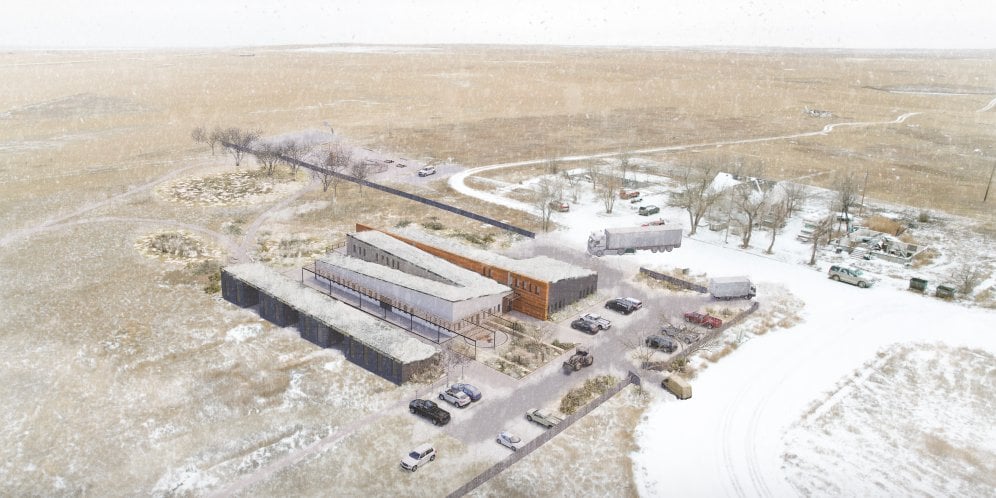
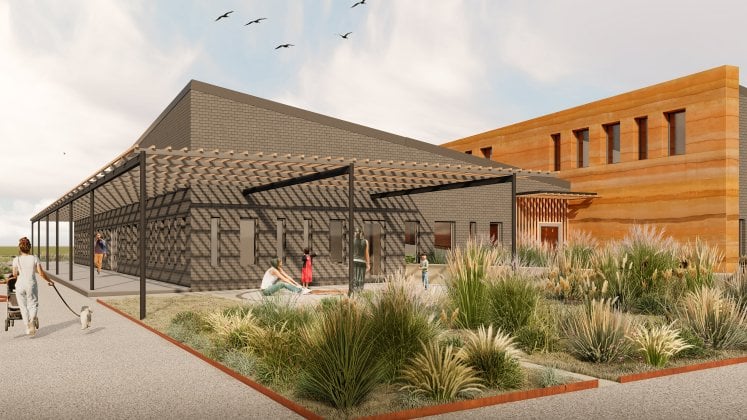
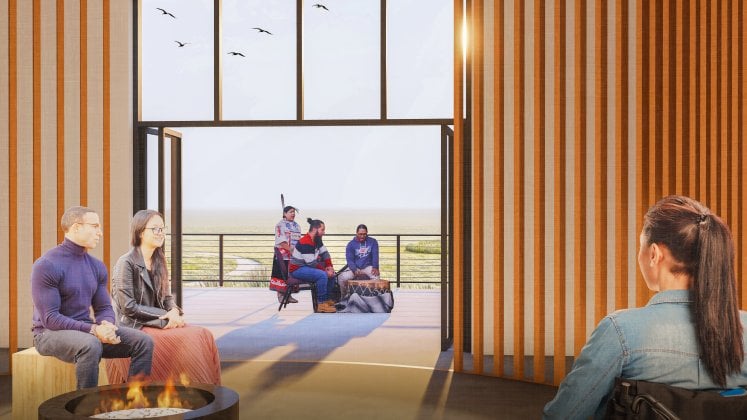
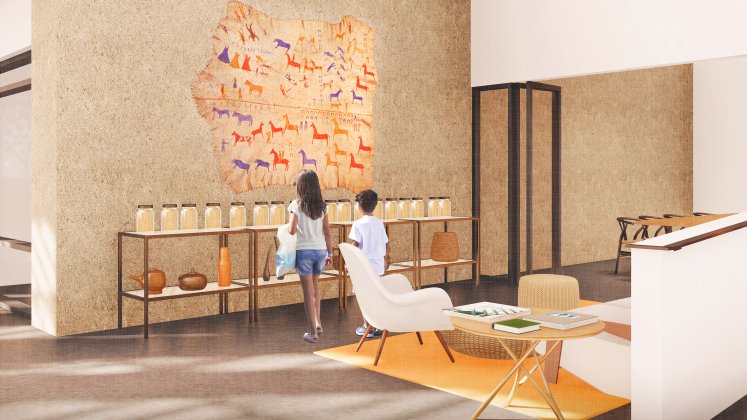
Cheyenne River Sioux Reservation, South Dakota
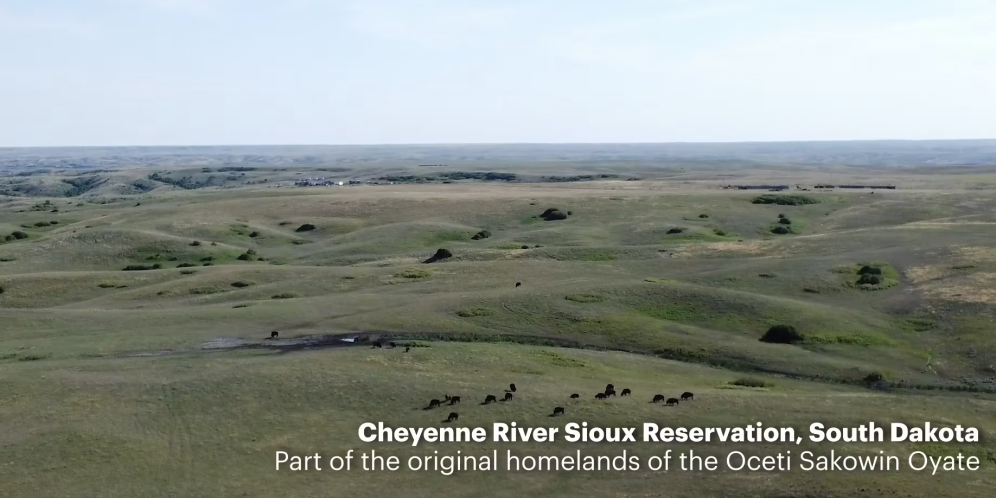
Native BioData Consortium
The Native BioData Consortium (NBDC) is a first-of-its-kind biobank and research center on Native land, helping to ensure advances in genetics and health research benefit Indigenous people.
The Native BioData Consortium is the first nonprofit research institute and bio-repository (or biobank) led by Indigenous scientists and tribal members in the United States. The NBDC was founded in 2010 to ensure that advances in science and health research benefit all Indigenous people. Operating within the jurisdictional bounds of the Cheyenne River Reservation in South Dakota, the NBDC is piloting a model for collaboration and policy-building around Indigenous data sovereignty. The new BioData Campus will bring together a consortium of Indigenous scientists and tribal members and create a precedent of sovereign control and protection over Native biodata.
There are currently no research facilities elsewhere in the world dedicated to the work that the NBDC is doing. The Native BioData Campus will be the first research facility to affirm Indigenous sovereignty by regrounding the research, data, and biodiversity that has been exploited and extracted from Cheyenne River Sioux land and Indigenous lands worldwide.
The Native BioData Campus has the potential to create significant impact across scales. It will feature an 11,100 sq. ft. state-of-the-art research facility, which will host Native- and non-Native scientists, students, nonprofit organizations, Reservation services offices, foundations, and visiting Tribal governments. Seven units of on-campus housing will be provided to facilitate short and long-term residencies. A community playground, trail network, and outdoor gardens and teaching spaces will activate and restore the 9.9-acre site as a healthy grassland ecosystem.
The massing strategy of Campus buildings celebrates the forms inherent to Great Plains landscapes, establishing multi-sensorial connections back to the land. The space program has been designed to balance the security of biodata with the desire for transparency and knowledge exchange, inviting audiences to engage with their data as they choose. The campus will be constructed over three phases and will embody the talent, skills, and material identity of the community and place.
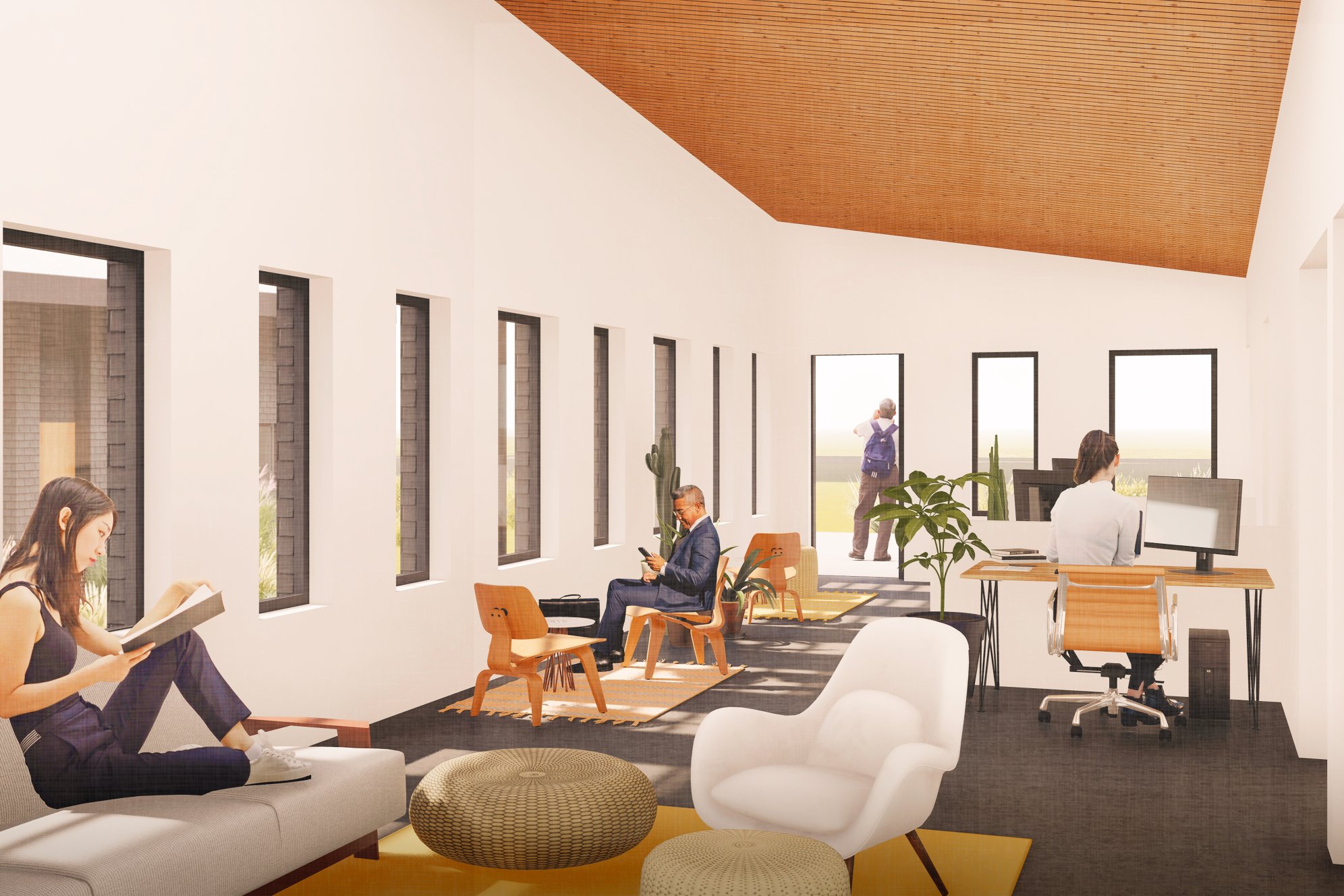
Through the building form and its relationship to the site, the Campus is grounded in its immediate and surrounding environment.
Rammed Earth Walls | Rammed earth forms one of the primary walls of the main Campus building. The stratified bands of the material lead building users up to the ceremony space and down into the data storage area. This material and technique have historic roots in agricultural buildings on the Great Plains.
Sloping Roofs | Gentle-sloping roof lines of the Campus reflect the rolling hills of the prairie. They are designed with consideration of drifting snow flows and a desire to reflect the surrounding landscape. To further merge into the site, sloping roof planes can serve as living roof areas, becoming containers for native plant species.
E-W Viewsheds | The building is oriented to guide building users from the east-facing entrance towards expansive views westwards looking out over the open prairie, in alignment with sacred orientations. Maintaining multi-sensory connections to the land intends to ground the science and people housed within the Campus to the power of sovereign Indigenous land and the communities this work is meant to serve.
Berm | A long-used, traditional building technique of Indigenous architecture in the Plains, berming, or embedding structures into the earth, leverages thermal mass to buffer extreme temperature swings. Berms can enfold the Campus using earth from the site excavated during construction. The use of earth berms soften building edges, weaving structures into the landscape.
Regenerative Prairie Landscape & Trail | The Campus landscape is an opportunity to help restore species intrinsic to the Great Plains Ecoregion, giving back to the land in which it is grounded. Passive reseeding of native grasses can replace recently-introduced invasive plants and help to restore a diversity of original species to the land. In addition, we envision a boardwalk trail that loops through the overall site, providing opportunities to experience areas of biodiversity restoration and the expansive plains and sky.
Community Playground | The addition of a playground in the northwest corner of the site will create another space on the site for the community to gather, have a presence and feel a sense of connection, and cultivate belonging. This area of the site has ample space for both a playground and basketball court and would be accessed via the existing road and a walking trail from the Campus building.
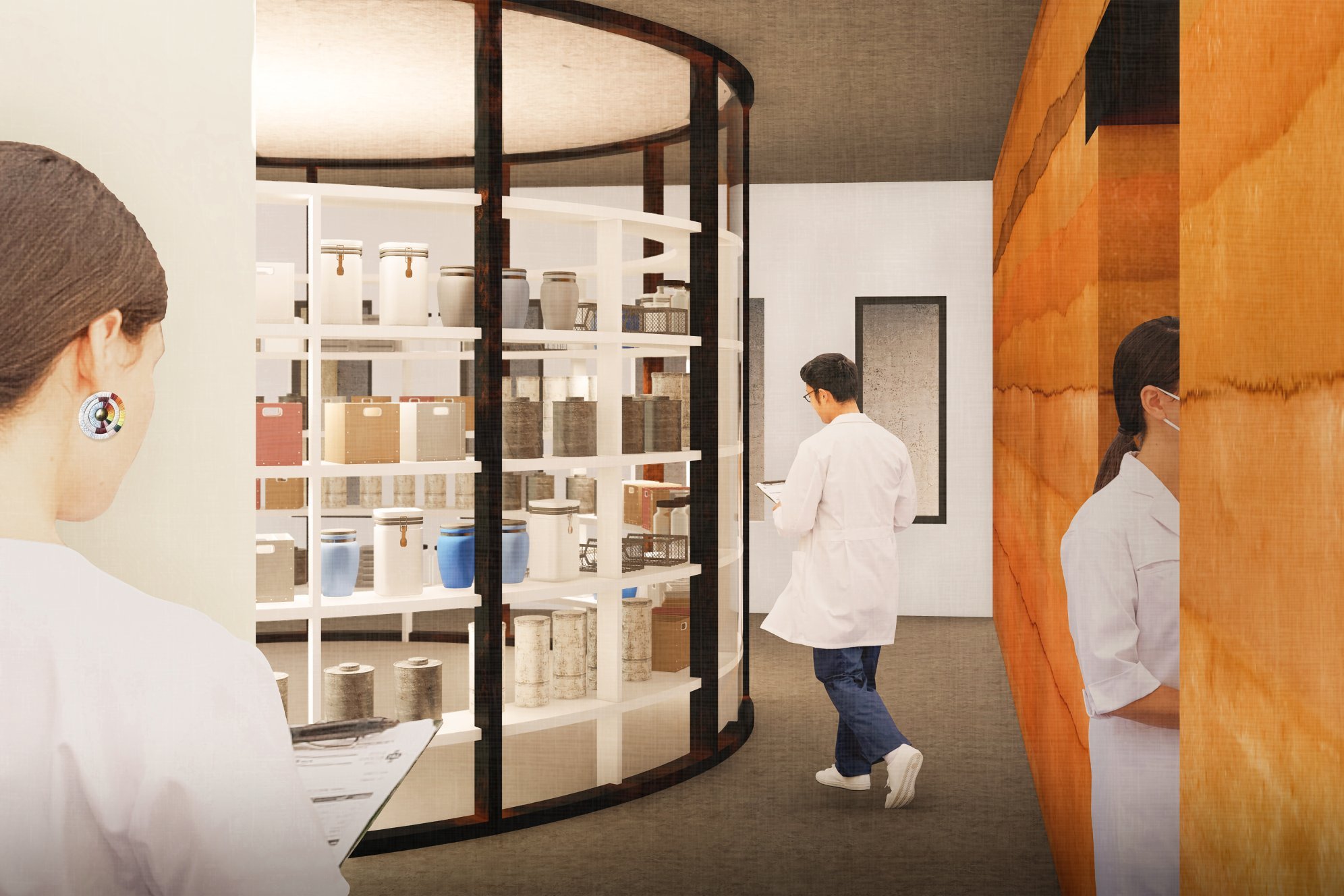
Disaster resiliency and carbon neutrality are prioritized through the integration of renewable energy, cyclical processing systems, redundant infrastructure, regionally sourced and low-embodied carbon materials, and passive heating, cooling, and ventilation.
The Native BioData Campus will be developed, owned, and operated by the Native BioData Consortium in close collaboration with many Cheyenne River Sioux Tribe agencies.
Throughout the design process, MASS engaged with leadership and team members of NBDC and heard from community leaders across the Cheyenne River Sioux Tribe. The engagement process centered on key questions which allowed the design team to develop and refine the campus design. Engagement with our partners also involved MASS’s film team, who developed film collateral, strengthening the project's narrative.
Project Details
44.991162702, -101.234832394
Location: Cheyenne River Sioux Reservation, South Dakota
Year: 2022
Status: In Progress
Size: 11,100 sq. ft.
Clients:
The Native BioData Consortium
Cheyenne River Sioux Tribe
